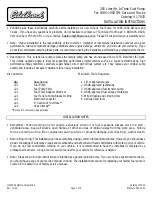
Vehicles outside the sensor range
Fig. 147
Narrow vehicle.
Fig. 148
Vehicle changes lane.
ACC may not react or may react with a delay or with
an unwanted response in the following driving situa-
tions:
— Vehicles that are driving outside the sensor range
in close proximity to your vehicle, e.g. motorbikes
→
Fig. 147
.
— Vehicles that change into your lane directly in
front of your vehicle →
Fig. 148
.
— Vehicles with bodies or attachments that project
beyond the vehicle.
Switching the ACC on and off
Please refer to
at the start of the chapter on
page 158.
Fig. 149
Left-hand side of the multifunction steering
wheel: buttons for operating the ACC (variant 1).
Fig. 150
Left-hand side of the multifunction steering
wheel: buttons for operating the ACC (variant 2).
Switching on
— Press the
button.
ACC is not yet active and the indicator lamp corre-
sponding to the driving situation lights up.
Starting control
— While driving forwards, press the
button.
ACC stores the current speed and maintains the set
distance. If the current speed is outside the defined
speed range, ACC will set the minimum speed (when
driving more slowly than the limit) or maximum
speed (when driving faster than the limit).
Depending on the situation and the instrument clus-
ter version, the following warning lamps light up:
ACC has taken control.
ACC has taken control; no vehicle
detected ahead.
ACC has taken control; vehicle de-
tected ahead.
When ACC is not active, the indicator lamps are not
lit or light up grey.
Cancelling control
— Briefly press the
button or press the brake
pedal.
The indicator lamp corresponding to the driving sit-
uation lights up, and the speed and distance remain
stored.
Control is automatically cancelled if the traction
control system (TCS) is deactivated.
Resuming control
— Press the
button.
or
or
Adaptive Cruise Control
161
3G0012720AK









































